Seven Tips to Help Keep Your Horse Healthy When Traveling
May 26, 2017 Comments Off on Seven Tips to Help Keep Your Horse Healthy When Traveling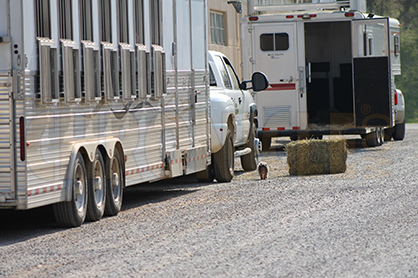
2) Bring your own equipment, including buckets, and do not retrieve water from a communal source. When filling buckets, keep the hose nozzle above the water level, and do not allow the hose or nozzle to touch the bucket.
Continue reading …Genetic Risk Factor for Equine Eye Cancer Identified
May 25, 2017 Comments Off on Genetic Risk Factor for Equine Eye Cancer Identified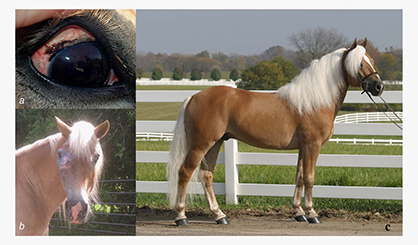
Squamous cell carcinoma (SCC) is the most common cancer found in equine eyes and the second most common tumor of the horse overall. Thanks to a recent genetic study led by UC Davis, horse owners can now identify horses at risk for ocular SCC and make informed breeding decisions.
Continue reading …When is Pasture Safe For the Insulin Resistant Horse?
May 24, 2017 Comments Off on When is Pasture Safe For the Insulin Resistant Horse?
When is pasture safer for the insulin resistant (IR) horse – late afternoon or early morning? Google this question, ask your vet, or talk to a friend and you will get both answers! How frustrating! It’s time we cleared this up.
Continue reading …Researchers Find Positive Long-Term Results For Colic Surgery
May 23, 2017 Comments Off on Researchers Find Positive Long-Term Results For Colic Surgery
Researchers looked at the long-term outcomes of 236 horses undergoing surgery for colic between 2006 and 2012… of the horses that survived to hospital discharge, 83.7 percent returned to their previous or intended activity, and 78.5 percent regained their pre-surgical or higher level of performance.
Continue reading …Know the Signs of Equine Protozoal Myeloencephalitis (EPM) – A Master of Disguise
May 16, 2017 Comments Off on Know the Signs of Equine Protozoal Myeloencephalitis (EPM) – A Master of Disguise
Equine Protozoal Myeloencephalitis (EPM) is a debilitating neurological disease that cannot be ignored. More than half of all horses in the United States, and in some areas as high as 90 percent, have been exposed to this disease.1 Its ability to masquerade as other health issues, such as lameness or other neurologic diseases, makes it difficult to diagnose,1 and its effects can be heartbreaking for the horse and owner.
Continue reading …New Research Shows Beneficial Effects of Equine Psychotherapy on Youth With PTSD
May 15, 2017 Comments Off on New Research Shows Beneficial Effects of Equine Psychotherapy on Youth With PTSD
“It gives us an important recognized tool when working with troubled youth who urgently need a treatment option that will help them progress during vulnerable time in their lives.”
Continue reading …Must-Have’s For Your Equine First Aid Kit
May 11, 2017 Comments Off on Must-Have’s For Your Equine First Aid Kit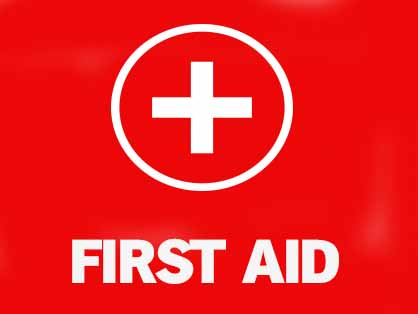
While unloading your horse, he quickly steps back, lifting his head high to catch on the bare metal of your horse trailer. The gash is deep. What are your next steps?
Continue reading …New Research on “Ejaculate Economics”- Semen Composition in Stallions
May 10, 2017 Comments Off on New Research on “Ejaculate Economics”- Semen Composition in Stallions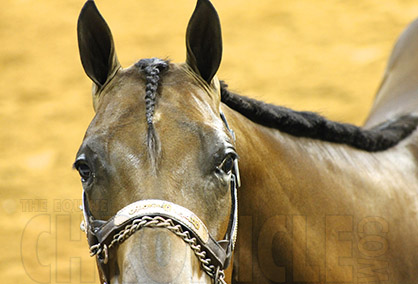
According to a recent study*, stallions can alter the composition of their semen to optimize “ejaculate economics.” The theory of ejaculate economics suggests that sperm production is a cost-benefit process. As such, situations involving competition for fertile females stimulate stallions to produce high-volume ejaculates when compared to situations in which no male competition exists or when mares are unlikely to conceive.
Continue reading …
Young grasses are low fiber, very high protein and higher in rapidly fermentable carbohydrate fractions than more mature growths. This can lead to a variety of hind gut digestive upsets including bloating, varying degrees of manure softening/diarrhea, and in some cases colic. This can be avoided by careful introduction to the new grass.
Continue reading …New Trial Aims to Improve Clinical Control of Endocrine Dysfunction in Horses with PPID
May 8, 2017 Comments Off on New Trial Aims to Improve Clinical Control of Endocrine Dysfunction in Horses with PPID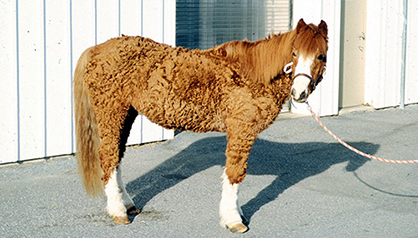
The most common root cause of laminitis in horse populations worldwide is some form of underlying endocrine dysfunction, with high blood insulin being the common feature that appears to directly lead to laminitis lesions in horses with Pituitary pars intermedia dysfunction (PPID, or Equine Cushings disease) or Equine Metabolic Syndrome.
Continue reading …







